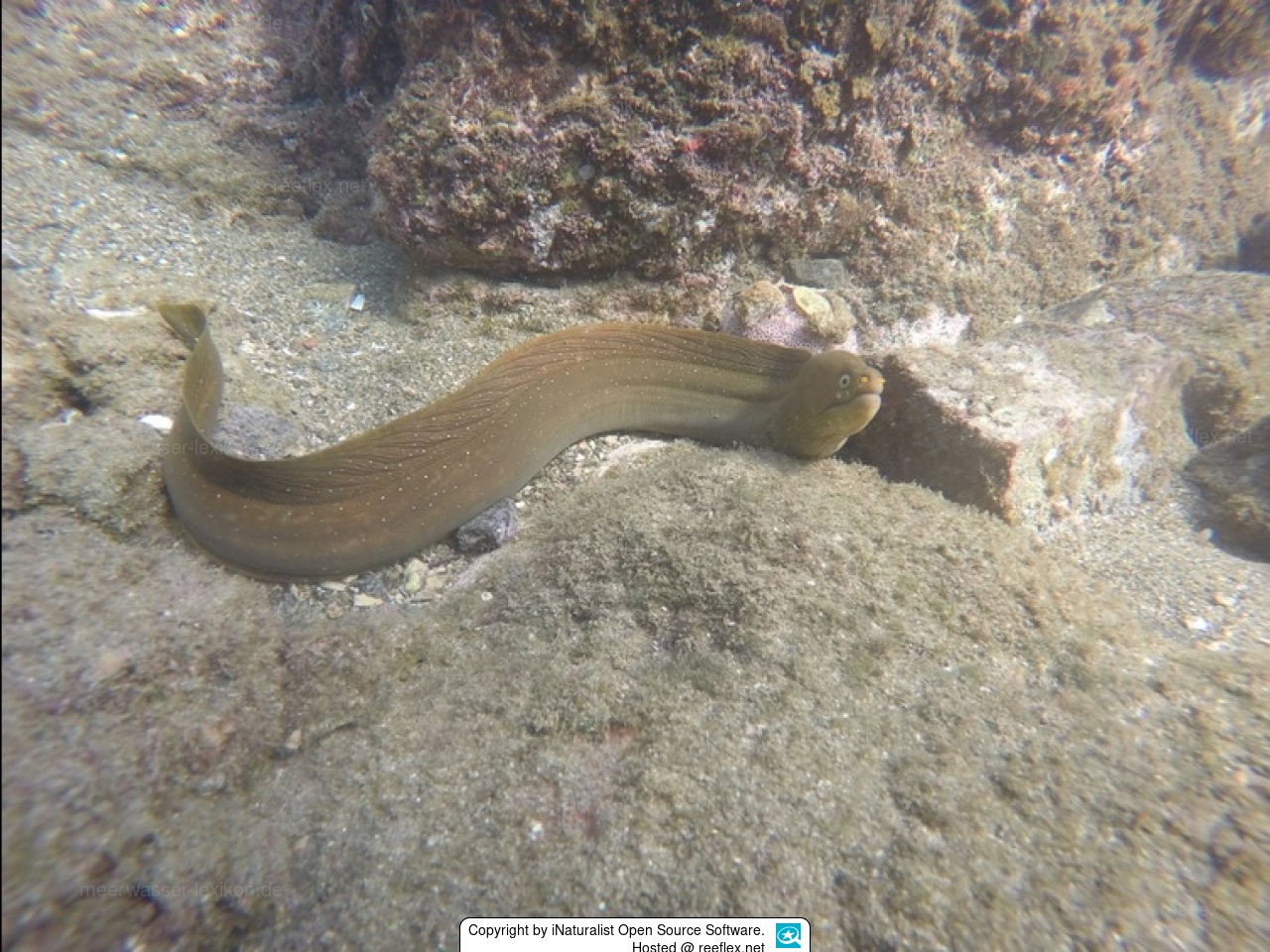Info
Another identifying feature is the anterior orange nostrils.
Brief Description;
Snout and jaw short, broad; anterior nostril tubular, posterior a small hole above the eye.
No canines, molar-like teeth on mouth; maxillary teeth blunt.
Length of tail very slightly greater than ½ TL; gill opening a small slit in middle of flank; dorsal and anal fins covered with skin, but distinct;
Origin of dorsal fin anterior to gill opening, origin of anal fin immediately posterior to anus; caudal tip blunt, with one fin covered with skin; pores in lateral line absent except for 2 pores above and anterior to gill opening.
$muraenes
Synonym: Poecilophis nocturnus Cope, 1872
Jumping guard
A jumping guard prevents (nocturnal) fish from jumping out.
Wrasses, blennies, hawkfishs and gobies jump out of an unprotected tank in fright if their night rest is disturbed, unfortunately these jumpers are found dried up in the morning on carpets, glass edges or later behind the tank.
https://www.korallenriff.de/en/article/1925_5_Jump_Protection_Solutions_for_Fish_in_the_Aquarium__5_Net_Covers.html
A small night light also helps, as it provides the fish with a means of orientation in the dark!







 iNaturalist Open Source Software
iNaturalist Open Source Software









